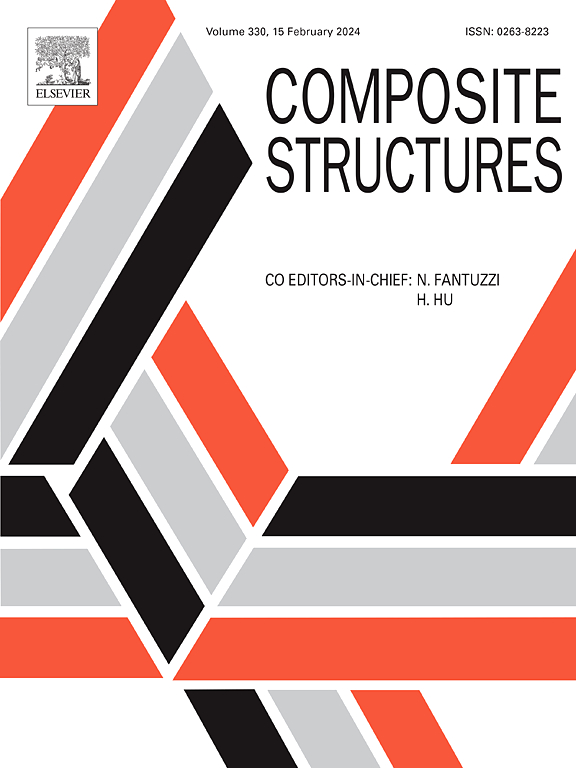基于深度学习的三维管状编织复合材料粘弹性性能快速预测
IF 6.3
2区 材料科学
Q1 MATERIALS SCIENCE, COMPOSITES
引用次数: 0
摘要
快速准确地计算三维管状编织复合材料的宏观粘弹性,对其结构设计和优化具有重要的现实意义。本研究提出了一种结合跨尺度建模的数据驱动方法来预测三维管状编织复合材料的轴向压缩粘弹性特性。首先,建立基体与纱线的粘弹性本构关系,基于微ct技术构建三维管状编织复合材料的跨尺度有限元模型,计算粘弹性曲线并进行实验验证;在此基础上,建立基于超参数自动优化算法的深度神经网络(DNN)模型,对有限元模型生成的仿真数据集进行训练和测试,最后预测了不同参数(编织角、纤维偏心率、纱间孔隙率、纱内孔隙率、温度、纤维总体积分数和纤维弹性模量)下的三维管状编织复合材料轴向压缩松弛模量曲线。结果表明,基于有限元和深度学习的数据驱动模型能够快速准确地预测三维管状编织复合材料的宏观粘弹性。本文章由计算机程序翻译,如有差异,请以英文原文为准。
Fast prediction of viscoelastic behavior of 3D tubular braided composites based on deep learning
Rapidly and accurately calculating the macroscopic viscoelastic properties of three-dimensional (3D) tubular braided composites is of great practical significance for their structural design and optimization. This study proposes a data-driven approach combined with trans-scale modeling to predict the axial compressive viscoelastic properties of 3D tubular braided composites. First, the viscoelastic constitutive relations for the matrix and the yarn are established, and the trans-scale finite element model of the 3D tubular braided composites is constructed based on micro-CT technology to calculate the viscoelastic curves and perform experimental validation. Then, a deep neural network (DNN) model integrated with an automatic hyperparameter optimization algorithm is built to train and test the simulation dataset generated by the finite element model, and finally the axial compression relaxation modulus curves of 3D tubular braided composites with different parameters (braiding angle, fiber eccentricity, inter-yarn porosity, intra-yarn porosity, temperature, total fiber volume fraction and fiber elastic modulus) are predicted. The results show that the developed data-driven model based on finite element and deep learning can quickly and accurately predict the macroscopic viscoelastic properties of 3D tubular braided composites.
求助全文
通过发布文献求助,成功后即可免费获取论文全文。
去求助
来源期刊

Composite Structures
工程技术-材料科学:复合
CiteScore
12.00
自引率
12.70%
发文量
1246
审稿时长
78 days
期刊介绍:
The past few decades have seen outstanding advances in the use of composite materials in structural applications. There can be little doubt that, within engineering circles, composites have revolutionised traditional design concepts and made possible an unparalleled range of new and exciting possibilities as viable materials for construction. Composite Structures, an International Journal, disseminates knowledge between users, manufacturers, designers and researchers involved in structures or structural components manufactured using composite materials.
The journal publishes papers which contribute to knowledge in the use of composite materials in engineering structures. Papers deal with design, research and development studies, experimental investigations, theoretical analysis and fabrication techniques relevant to the application of composites in load-bearing components for assemblies, ranging from individual components such as plates and shells to complete composite structures.
 求助内容:
求助内容: 应助结果提醒方式:
应助结果提醒方式:


